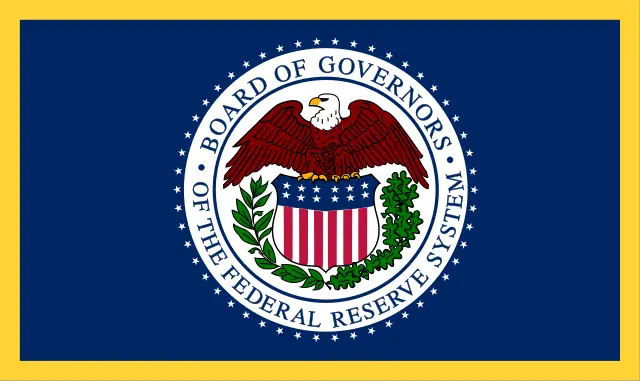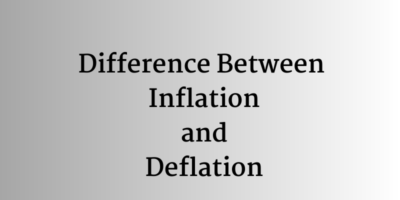What is the Federal Reserve System?

What is the Federal Reserve System? The Federal Reserve System commonly referred to as “the Fed,” or “Federal Reserve” is the central banking system of the United States. It was created in 1913, by the Federal Reserve Act to provide a stable and flexible monetary and financial system for the country. The Federal Reserve System is made up of twelve regional Federal Reserve Banks located throughout the United States, as well as the Board of Governors in Washington, D.C. The Board of Governors consists of seven members appointed by the President of the United States and confirmed by the Senate.
Purpose of the Federal Reserve System?
The Federal Reserve System serves several important purposes, including:
- Conducting monetary policy: The Fed’s primary objective is to promote maximum employment, stable prices, and moderate long-term interest rates. It uses various tools, such as adjusting the federal funds rate, to influence the supply of money and credit in the economy.
- Promoting financial stability: The Fed supervises and regulates banks and other financial institutions to ensure the safety and soundness of the banking system and to protect consumers. It also monitors financial markets for potential risks and takes actions to mitigate them.
- Providing financial services: The Fed provides various financial services to banks and the U.S. government, such as maintaining accounts and processing payments. This helps to ensure the smooth functioning of the financial system.
- Supporting the economy in times of crisis: The Fed can provide liquidity to financial institutions and markets during times of economic stress, such as during the 2008 financial crisis. This helps to prevent a broader economic collapse and supports economic recovery.
The Federal Reserve System plays a crucial role in maintaining a stable and healthy U.S. economy, and its policies and actions have a significant impact on financial markets and the lives of Americans.
Brief History of the Federal Reserve System
The Federal Reserve System was created on December 23, 1913, in response to a series of financial panics and bank failures that had occurred in the late 19th and early 20th centuries. The panic of 1907, in particular, was a major catalyst for the creation of the Fed.
In 1910, a group of bankers, led by J.P. Morgan, met on Jekyll Island to draft a plan for a central banking system. The plan was presented to Congress in 1912, and after some modifications, the Federal Reserve Act was signed into law by President Woodrow Wilson in December of that year.
The Federal Reserve Act created a system of twelve regional Federal Reserve Banks, each with its own board of directors, and a Board of Governors in Washington, D.C. The Board of Governors was tasked with setting monetary policy and regulating banks, while the regional Reserve Banks were responsible for carrying out monetary policy and providing financial services to banks.
Over the years, the Fed’s role and responsibilities have expanded. In the 1930s, during the Great Depression, the Fed was given the authority to buy government securities and set interest rates. In the 1970s, the Fed’s focus shifted to controlling inflation, and it began targeting specific levels of inflation with its monetary policy. In the 2000s, the Fed took unprecedented actions to stabilize the financial system during the global financial crisis of 2008-2009, including buying large amounts of securities and providing liquidity to financial institutions.
Today, the Federal Reserve System is considered one of the most important and powerful central banks in the world, and its policies and actions have a significant impact on the U.S. economy and financial markets.
What Are the 12 Regional Reserve Banks in the U.S.?
The Federal Reserve System is made up of twelve regional Federal Reserve Banks located throughout the United States. Each of these twelve Federal Reserve Banks is responsible for carrying out monetary policy and supervising banks in its region, and together they form the Federal Reserve System, the central banking system of the United States. Below is a list of the twelve banks.
- Federal Reserve Bank of Boston
- Federal Reserve Bank of New York
- Federal Reserve Bank of Philadelphia
- Federal Reserve Bank of Cleveland
- Federal Reserve Bank of Richmond
- Federal Reserve Bank of Atlanta
- Federal Reserve Bank of Chicago
- Federal Reserve Bank of St. Louis
- Federal Reserve Bank of Minneapolis
- Federal Reserve Bank of Kansas City
- Federal Reserve Bank of Dallas
- Federal Reserve Bank of San Francisco
Who Oversees the Federal Reserve System?
The Federal Reserve System is overseen by the Board of Governors of the Federal Reserve System, which is a federal government agency headquartered in Washington, D.C. The Board of Governors is responsible for setting monetary policy and supervising and regulating banks and other financial institutions in the United States.
The Board of Governors consists of seven members, each appointed by the President of the United States and confirmed by the Senate. Members of the Board of Governors serve staggered 14-year terms, and the Chair and Vice Chair of the Board are appointed by the President for four-year terms.
The Federal Reserve Banks are overseen by a board of directors, which includes both bankers and representatives of the public. The Board of Governors also oversees and works closely with the Federal Open Market Committee (FOMC), which is responsible for setting monetary policy in the United States.
If There Were No Federal Reserve System?
It is difficult to predict exactly what would happen if there was no Federal Reserve, as the central bank plays a critical role in the U.S. financial system and economy. However, some experts believe that the following scenarios could occur:
- Increased financial instability: One of the primary roles of the Federal Reserve is to promote financial stability and prevent bank failures and financial panics. Without the Fed, the financial system may be more prone to instability and crises.
- Fluctuations in interest rates: The Federal Reserve sets interest rates based on its assessment of the economy and the level of inflation. Without the Fed, interest rates may fluctuate more dramatically, which could have negative impacts on businesses and individuals.
- Lack of lender of last resort: The Federal Reserve acts as a lender of last resort to banks and other financial institutions in times of crisis. Without the Fed, there would be no institution to provide emergency loans and prevent widespread bank failures.
- Reduced ability to control inflation: The Federal Reserve plays a key role in controlling inflation through its monetary policy. Without the Fed, inflation may be more difficult to control, which could lead to higher prices and reduced purchasing power for consumers.
The absence of the Federal Reserve could lead to a less stable and more volatile financial system and economy, with potentially negative consequences for businesses and individuals alike.
How to Contact the Federal Reserve?
You can contact the Federal Reserve System in a few different ways:
- Phone: You can call the Federal Reserve’s main phone number at (202) 452-3000 to speak with someone at the Board of Governors in Washington, D.C., or to be connected to one of the twelve regional Federal Reserve Banks.
- Email: You can submit questions or comments to the Board of Governors of the Federal Reserve System in Washington, D.C. through the “Contact Us” page on the Federal Reserve’s website.
- Mail: You can send mail to the Board of Governors at the following address: 20th Street and Constitution Avenue N.W., Washington, DC 20551.
- Online Form: You can submit a question or comment using the online form on the “Contact Us” page of the Federal Reserve’s website.
- Social Media: The Federal Reserve also maintains social media accounts on platforms like Facebook, Twitter, and LinkedIn, where you can follow the organization and reach out with questions or comments.
How to Contact the 12 Regional Federal Reserve Banks?
If you need to contact one of the Twelve Regional Federal Reserve Banks in the United States, you can find their contact information on the Federal Reserve’s website. Here are some general steps you can follow:
- Go to the Federal Reserve’s website (www.federalreserve.gov).
- Click on the “System Directory” link in the footer of the page.
- Click on the “Contact Your Local Federal Reserve Bank” link on the next page.
- On the “Federal Reserve Bank Services Contacts” page, you can find contact information for each of the twelve regional Federal Reserve Banks. Click on the name of the bank you need to contact to see its phone number, address, and email address.


